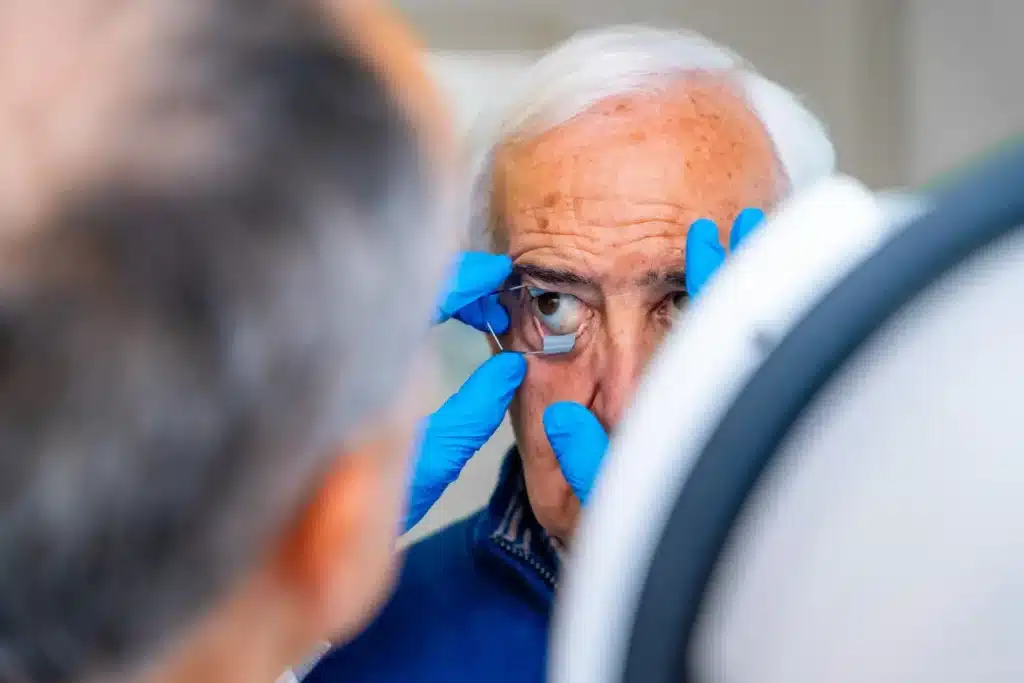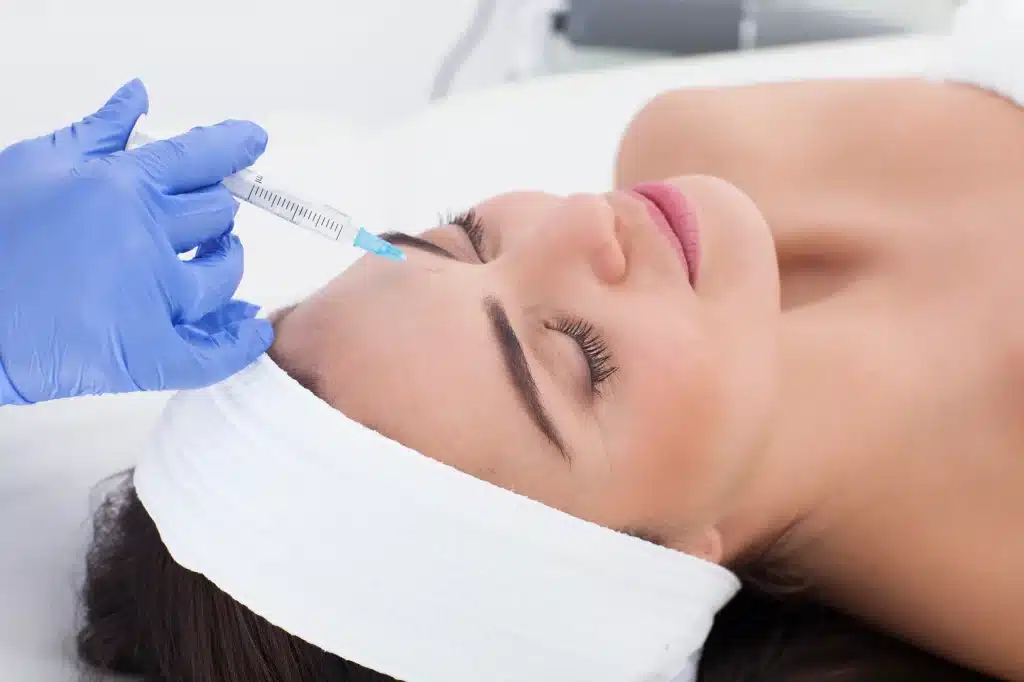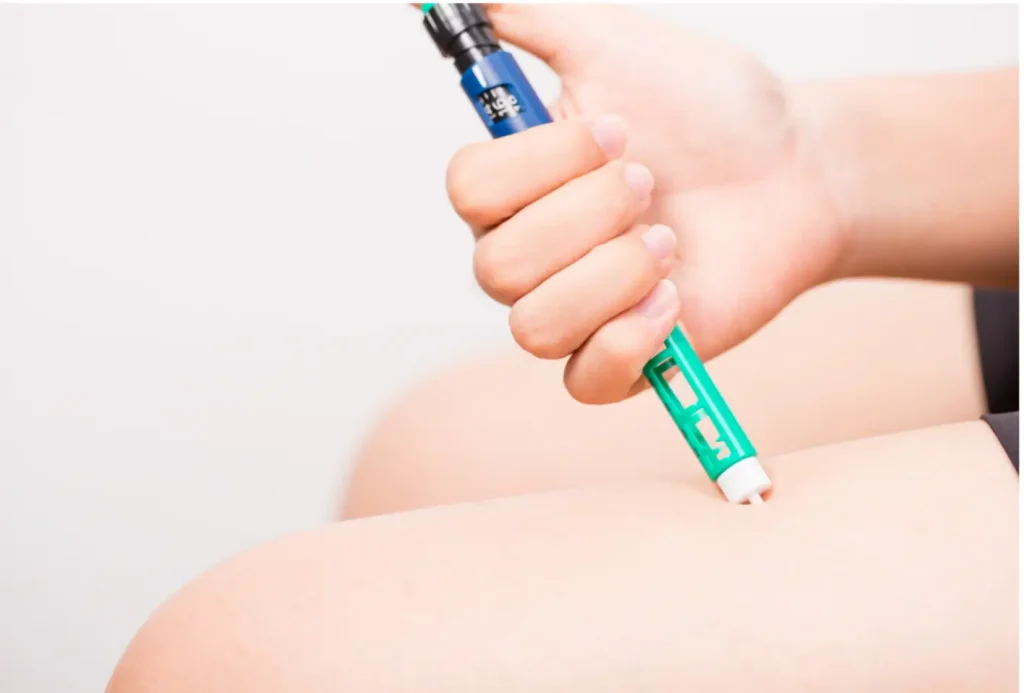Age-related macular degeneration (AMD) is a leading cause of vision loss in people over 60, gradually affecting the central part of vision crucial for reading, recognizing faces, and daily tasks. While AMD cannot be reversed, early detection and timely intervention can preserve sight and maintain independence.
One of the most promising treatments is Eylea (aflibercept)—an anti-VEGF injection therapy that slows disease progression and helps stabilize or improve vision in many patients. As research advances, Eylea has become a cornerstone in managing wet AMD, offering hope for long-term eye health.
In this article, we’ll explore how Eylea works, its effectiveness and safety profile, and what patients can expect from this widely used treatment for macular degeneration.
Key Takeaways
- Eylea (aflibercept) is a leading anti-VEGF therapy used to treat neovascular (wet) age-related macular degeneration (AMD), a condition that causes abnormal blood vessel growth and central vision loss.
- It works by inhibiting VEGF-A, VEGF-B, and PlGF, reducing inflammation, leakage, and vascular growth in the retina—addressing the underlying cause of wet AMD.
- Clinical trials show Eylea significantly improves and maintains vision, with many patients achieving 20/40 vision or better and maintaining gains over time.
- The standard Eylea dosing schedule involves a loading phase (monthly injections) followed by a maintenance phase (typically every 8 weeks), with adjustments based on patient response.
- Long-term success requires consistent follow-up, patient adherence, and regular monitoring by ophthalmologists to maintain visual stability and prevent disease recurrence.
About: Medical Spa RX provides medical practices with premium products at the best prices. If you’re looking to buy Eylea online for your practice, the sales representatives at Medical Spa RX can give you guidance.
Pathophysiology of Neovascular Age-Related Macular Degeneration
Neovascular or “wet” AMD is a chronic, vision-threatening condition that affects the macula, the central region of the retina responsible for sharp, detailed vision. It occurs when abnormal blood vessels—triggered by choroidal neovascularization—form beneath the macula. These vessels are fragile and prone to leaking fluid or blood, leading to distortion, scarring, and ultimately, central vision loss.
This form of AMD progresses more rapidly than the “dry” type and is responsible for the majority of cases of severe vision impairment related to AMD. If left untreated, wet AMD can cause irreversible damage to retinal tissue. Risk factors include advancing age (typically over 60), family history, smoking, high blood pressure, and cardiovascular disease.
Daily activities such as reading, face recognition, and driving become increasingly difficult, making early detection and prompt treatment crucial for preserving independence and quality of life.
Rationale for VEGF Inhibition in Treatment
Vascular Endothelial Growth Factor (VEGF) is central to the formation of new, abnormal blood vessels in wet AMD. It stimulates both angiogenesis and increased vascular permeability, which results in fluid accumulation and disruption of retinal architecture.

Anti-VEGF agents like Eylea aim to block this process. By inhibiting both VEGF-A and placental growth factor (PlGF), Eylea not only suppresses the growth of abnormal vessels but also reduces retinal inflammation and vascular leakage. This mechanism addresses the root cause of the disease, rather than just its symptoms.
Eylea’s VEGF inhibition offers multiple clinical benefits:
- Prevents progressive vision loss
- Reduces retinal swelling and fluid accumulation
- Enhances or maintains visual acuity
- Slows down long-term disease progression
This class of medications has revolutionized wet AMD care, transforming outcomes for patients once facing inevitable blindness.
Eylea’s Clinical Efficacy and Visual Outcomes
Clinical trials have consistently shown that Eylea (aflibercept) offers robust and sustained visual improvements in patients with wet AMD. In the VIEW 1 and VIEW 2 studies, Eylea was shown to be as effective as ranibizumab while requiring fewer injections for maintenance. Nearly 94% of patients maintained vision over a 52-week period, and many achieved gains of 15 letters or more in Best-Corrected Visual Acuity (BCVA).
In addition, studies such as VISTA and VIVID demonstrated Eylea’s superiority over laser photocoagulation in diabetic macular edema (DME), with rapid and lasting improvements. These results emphasize its value not only in stabilizing vision but also in enhancing it for many patients.
When discussing Eylea vs Vabysmo, clinical trial comparisons reveal that both drugs deliver similar vision outcomes. However, Vabysmo’s dual-action approach may provide longer-lasting anatomical control in select patients, while Eylea’s proven track record and broader use across multiple indications make it a dependable first-line therapy.
Dosing Schedule and Administration Techniques
A clear understanding of the Eylea dosing schedule is vital for both physicians and patients. Eylea treatment typically begins with a loading phase of 2 mg injections every 4 weeks for the first five doses. This phase is essential for rapidly stabilizing vision and suppressing disease activity.
Following the loading phase, patients often transition to maintenance therapy, receiving injections every 8 weeks. In some cases, especially with treat-and-extend strategies, the interval may be extended or shortened based on individual response.
Steps in Eylea Administration
- Preparation with numbing drops and antiseptic solution
- Cleaning the eyelid and lashes to maintain a sterile field
- Application of speculum to keep eyelids open
- Intravitreal injection using a fine needle
- Brief observation for pressure spikes or adverse events
Each step is designed to ensure safety, minimize discomfort, and reduce the risk of infection.
Long-Term Management and Patient Counseling
Because wet AMD is a chronic, progressive condition, long-term treatment with Eylea requires commitment and adherence. Skipping appointments or delaying injections can allow disease activity to return, jeopardizing visual gains.

Effective patient counseling enhances adherence by setting clear expectations and building trust. Patients should be informed about:
- The need for ongoing maintenance injections, even when vision improves
- The possibility of stable or improved vision, but not a full reversal of damage
- The importance of reporting side effects, such as pain or vision changes
- Lifestyle adjustments that support eye health, including a diet rich in leafy greens, smoking cessation, and blood pressure control
Empowering patients with knowledge helps reduce anxiety, improve satisfaction, and encourage consistent follow-through with their care plan.
Conclusion
Eylea continues to be a cornerstone treatment for wet AMD, offering high efficacy, manageable dosing, and a strong safety record. Its VEGF-targeting mechanism reduces the risk of vision loss and supports long-term eye health when administered consistently.
While newer therapies like Vabysmo offer promising alternatives, Eylea remains a go-to option for many clinicians thanks to its well-established results and extensive research. For patients diagnosed with AMD, understanding their treatment plan—and following through with it—can make the difference between vision loss and visual stability.
FAQs
1. What is Eylea used for?
Eylea is approved to treat several retinal conditions, including wet age-related macular degeneration (AMD), diabetic macular edema (DME), and retinal vein occlusion.
2. How is Eylea administered?
Eylea is given as an intravitreal injection directly into the eye. The procedure is done in a clinical setting with local anesthesia.
3. How often do I need Eylea injections?
The Eylea dosing schedule typically involves monthly injections for the first 5 doses, followed by maintenance every 8 weeks.
4. Are Eylea injections painful?
Most patients report mild discomfort. Doctors may use numbing drops before the injection to reduce pain.
5. What are the common side effects of Eylea?
Mild side effects include eye irritation or redness. Rare but serious risks include infection or retinal detachment.
6. Can Eylea restore vision?
Eylea can improve or stabilize vision in many patients, especially if treatment begins early. It does not cure AMD.
7. Does insurance cover Eylea?
Medicare and private insurers often cover Eylea. Depending on the plan, patients may need prior authorization.
References
Zhang S, Ren J, Chai R, Yuan S, Hao Y. Global burden of low vision and blindness due to age-related macular degeneration from 1990 to 2021 and projections for 2050. BMC Public Health. 2024;24(1). doi:10.1186/s12889-024-21047-x
Marshall H. Eylea (aflibercept). Published October 18, 2024. https://www.medicalnewstoday.com/articles/eylea





















